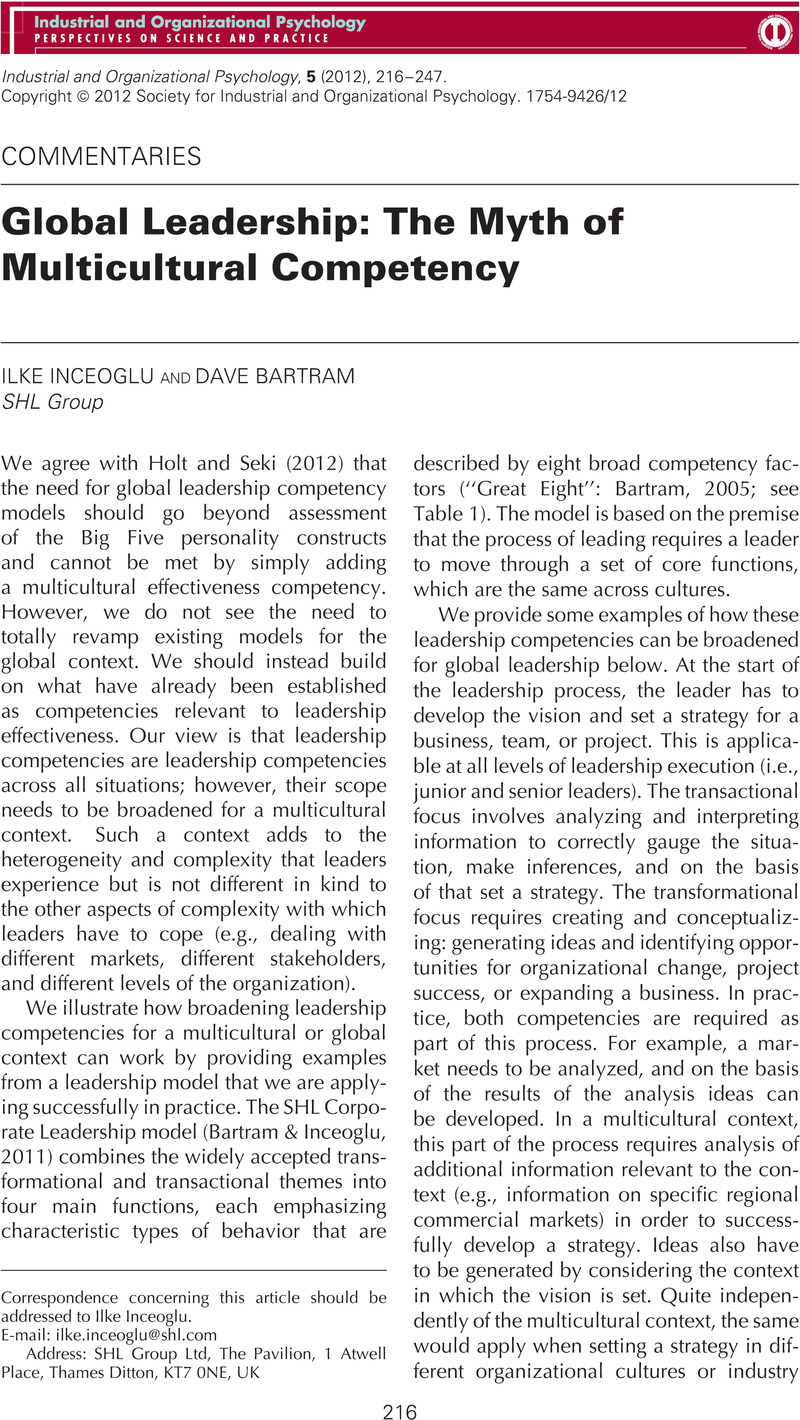Crossref Citations
This article has been cited by the following publications. This list is generated based on data provided by Crossref.
Seki, Kyoko
and
Holt, Katherine
2012.
Global Leadership to Transform the World.
Industrial and Organizational Psychology,
Vol. 5,
Issue. 2,
p.
248.
Ryan, Ann Marie
and
Ployhart, Robert E.
2014.
A Century of Selection.
Annual Review of Psychology,
Vol. 65,
Issue. 1,
p.
693.
Leung, Kwok
Ang, Soon
and
Tan, Mei Ling
2014.
Intercultural Competence.
Annual Review of Organizational Psychology and Organizational Behavior,
Vol. 1,
Issue. 1,
p.
489.
Osland, Joyce S.
Li, Ming
and
Wang, Ying
2014.
Advances in Global Leadership.
Vol. 8,
Issue. ,
p.
1.
Osland, Joyce S.
Li, Ming
and
Wang, Ying
2014.
Advances in Global Leadership.
Vol. 8,
Issue. ,
p.
1.
Lelchook, Ariel
and
de Luque, Mary Sully
2015.
International Encyclopedia of the Social & Behavioral Sciences.
p.
334.
Moye, Neta
Mueller‐Hanson, Rose
and
Langfred, Claus
2017.
The Wiley Blackwell Handbook of the Psychology of Recruitment, Selection and Employee Retention.
p.
353.
Kossek, Ellen Ernst
Huang, Jason L.
Piszczek, Matthew M.
Fleenor, John W.
and
Ruderman, Marian
2017.
Rating Expatriate Leader Effectiveness in Multisource Feedback Systems: Cultural Distance and Hierarchical Effects.
Human Resource Management,
Vol. 56,
Issue. 1,
p.
151.
Wernick, David A.
and
Branch, John D.
2022.
Global Trends, Dynamics, and Imperatives for Strategic Development in Business Education in an Age of Disruption.
p.
92.





